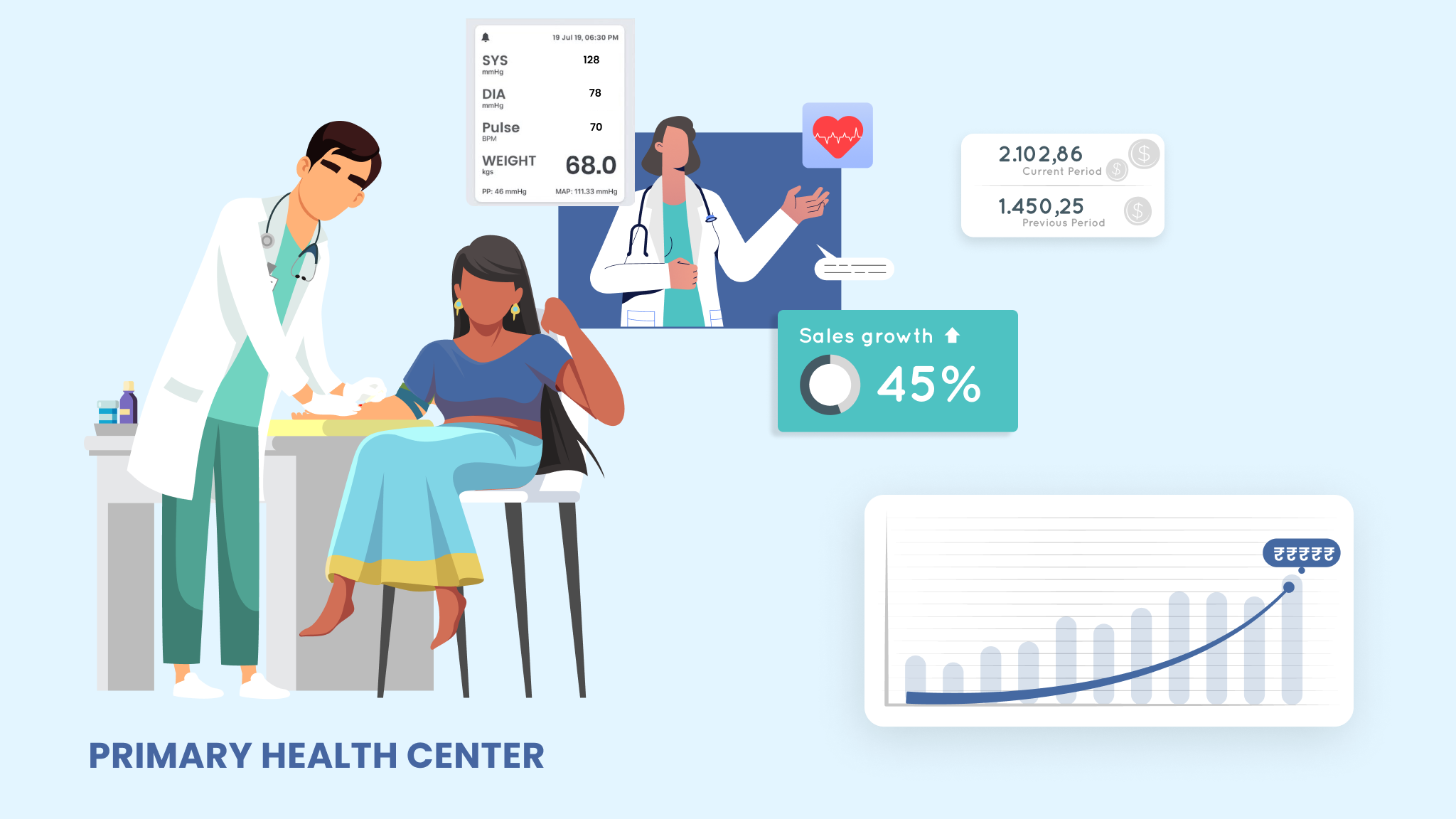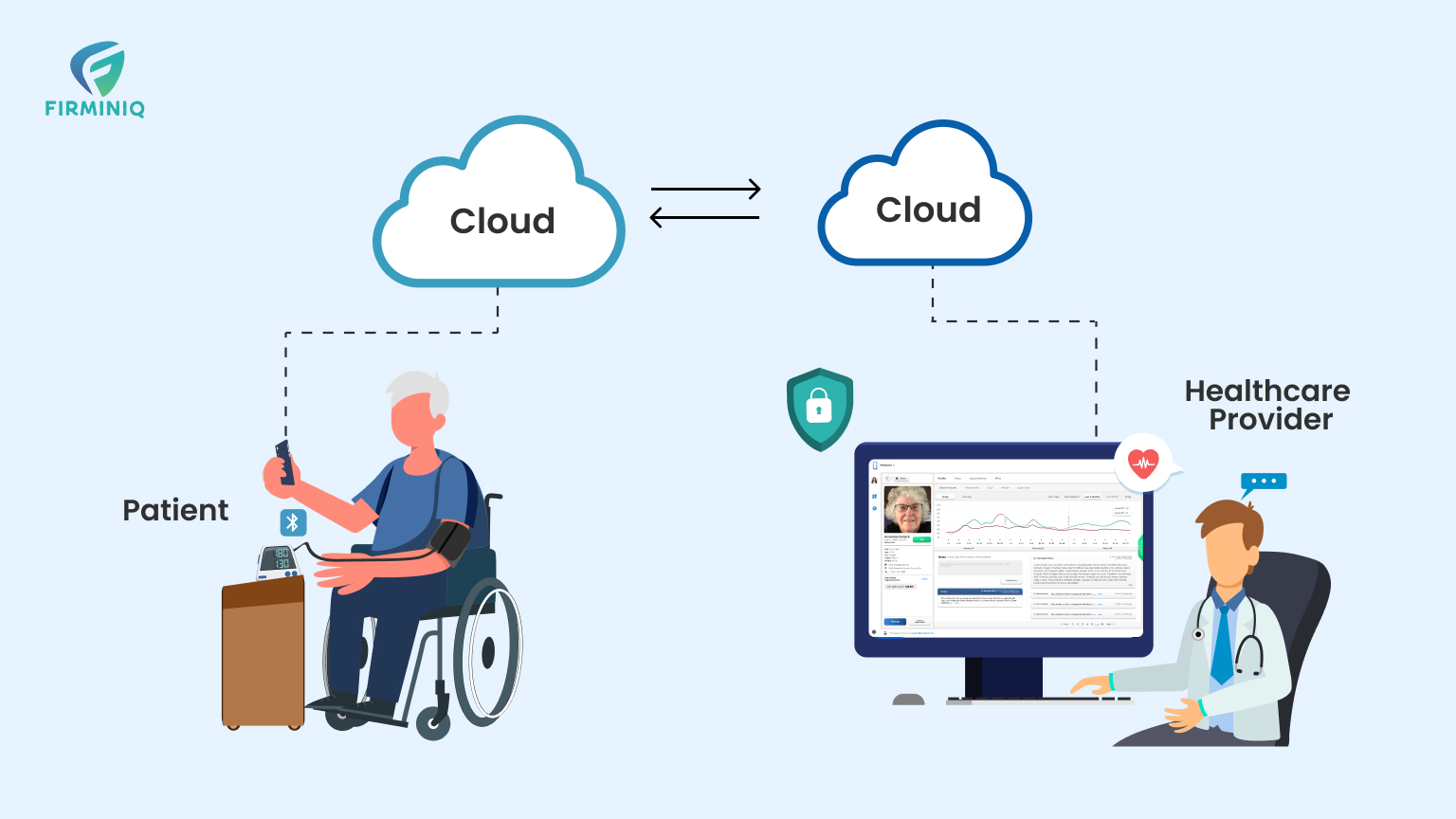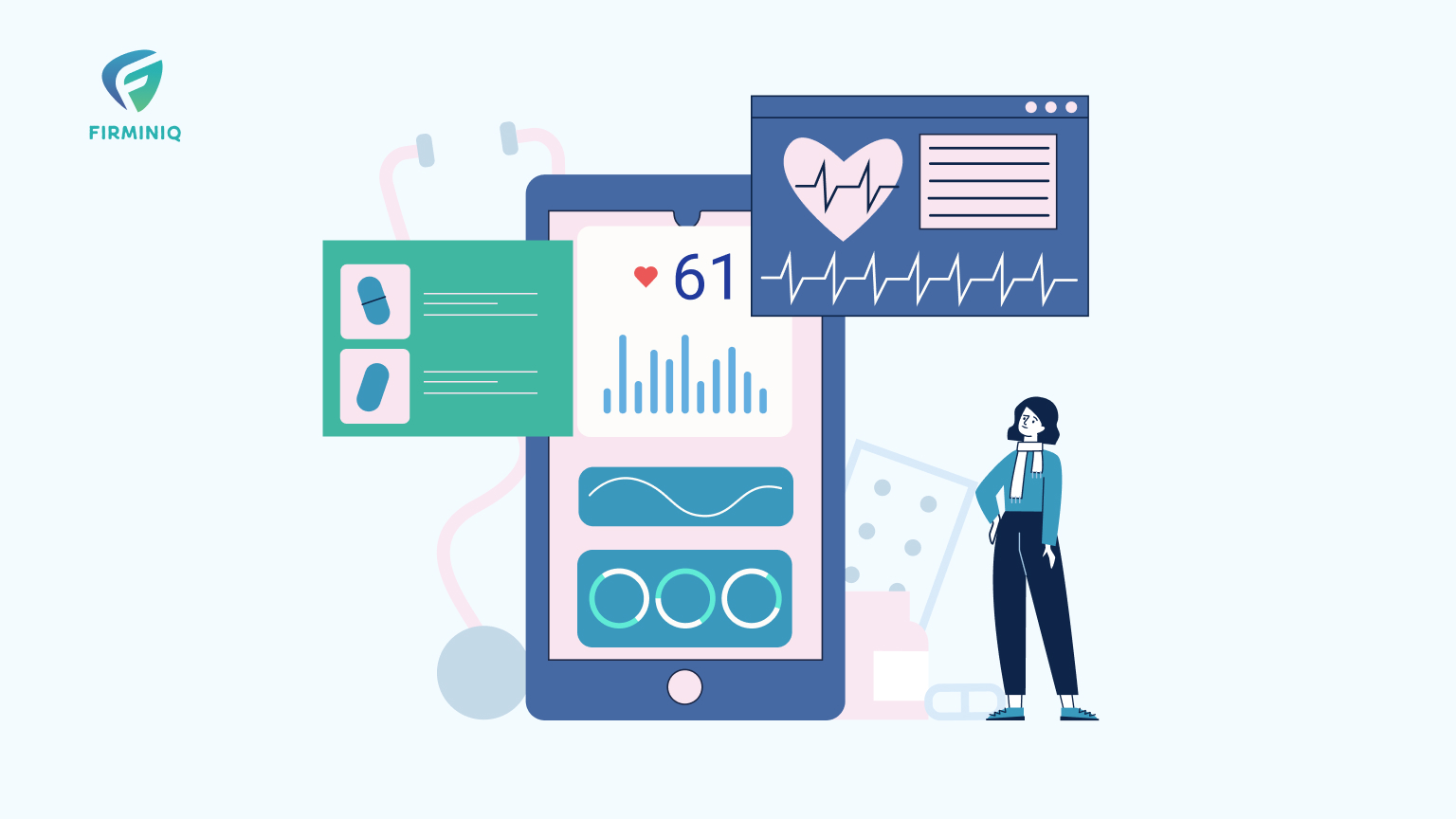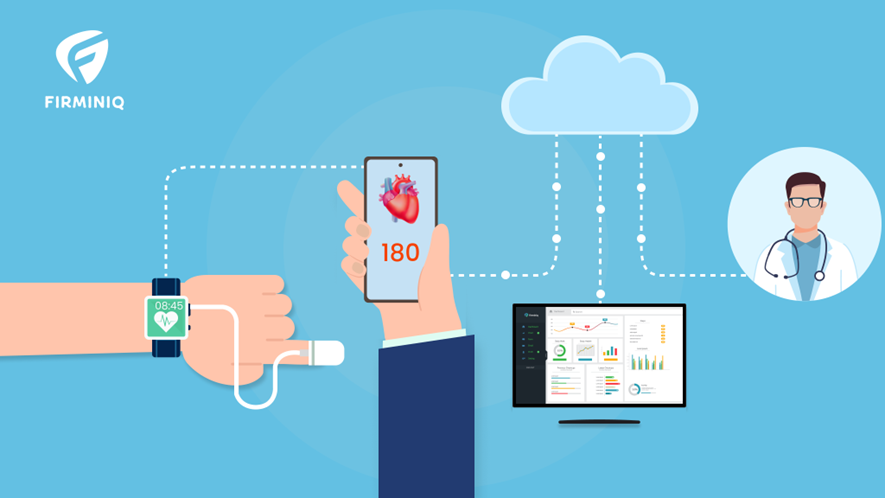Healthcare systems in India face unique challenges. While one challenge is a major population residing in rural areas, the other one is the rise of chronic diseases in India. Chronic conditions like hypertension, diabetes, asthma, and more are on the rise while putting immense pressure on the healthcare system. Patients often resort to methods like online research for medications or wait until the condition is extreme, due to the lack of consistent medical supervision. The situation escalates the stress on healthcare resources while highlighting the urgent need for chronic disease management. The below statistics highlight the growing burden of chronic conditions in India.
- “Chronic diseases (including cardiovascular and respiratory diseases, mental disorders, diabetes, and cancers) and injuries are the leading causes of death and disability in India—their burden will continue to increase during the next 25 years as a consequence of the rapidly aging population in India.”-Science Direct
- As per National library of Medicine, non-communicable diseases (NCDs) are the leading cause of death in India, with studies indicating a high prevalence in tribal populations. This study estimates the proportion of deaths due to NCDs among individuals aged 15 and older in tribal districts across India.
- “About 21% of the elderly in India reportedly have at least one chronic disease. Seventeen percent of elderly people in rural areas and 29% in urban areas suffer from a chronic disease. Hypertension and diabetes account for about 68% of all chronic diseases.”- PLOS ONE
However, thanks to Remote Patient Monitoring (RPM), it offers a promising solution. By leveraging technology to provide continuous monitoring and timely interventions, RPM can improve chronic disease management, regardless of the patient’s location. It is helping bridge the gap as it enables remote monitoring of patients. By leveraging RPM, India can enhance healthcare delivery and reduce hospital visits, improving the quality of life for people.
Evaluating the return on investment (ROI) for chronic conditions involves cost analysis, financial benefits it offers, and its overall impact on the healthcare system. Let us explore and clearly understand the need to implement RPM for managing chronic conditions, benefits it offers for healthcare organizations and how to evaluate the value of RPM for chronic care in India.
Key Benefits of RPM for Healthcare Organizations
Implementing RPM can revolutionize healthcare delivery, providing substantial advantages for healthcare providers. Let us delve into the key benefits.
1. Cost Efficiency
As per National Library of Medicine, nearly 86% of medical visits in India are made by rural residents, with many traveling over 100 km for healthcare. This travel costs 70%-80% out-of-pocket, often pushing them into poverty. The research highlights the urgent need for accessible healthcare solutions to reduce the financial burden on rural populations.
RPM encourages lesser hospital and emergency room visits that lowers the healthcare costs for both the healthcare organizations and the patients. Also, the hospitals can optimize the resources and focus on patient care. RPM can be added as a value-added service that can be managed by a care team, while reducing the burden on physicians and still being able to manage patients efficiently. The other factors which contribute are by preventing hospitalizations, optimizing resource allocation, and improving care coordination through early detection and intervention.
2. Better Clinical Outcomes
As RPM offers continuous and real-time monitoring, physicians can make informed decisions and make changes in the treatment plan accordingly to manage their chronic conditions. RPM contributes to better disease management and improves overall health outcomes. A holistic approach involving care teams, nutritionists, exercise specialists, and proper education ensures that patients receive comprehensive care, further enhancing clinical outcomes.
For example, “Apollo Hospitals Group launched its indigenously developed automated, rapid-response patient monitoring system. The system is designed to monitor and proactively alert a team of experts if it anticipates an unexpected deterioration in patient health.” Within 2 months of trial, the Apollo center has seen the system provide efficiency in nursing care and reduction in unexpected complications.
3. Reduces Emergency Visits
As RPM offers continuous monitoring and support, it reduces the need for frequent hospital visits and hospitalizations. For the patients, they are less likely to experience episodes that require emergency because RPM helps manage the conditions more effectively at home. It ultimately reduces the cost and better resource allocation for healthcare organizations. This is particularly beneficial for chronic care management, where consistent monitoring and timely interventions are required.
For example, a patient with chronic heart disease can be monitored for vital signs such as heart rate and blood pressure. If any abnormalities are detected, the care team can quickly intervene without the need for emergency hospitalization.
4. Data-Driven Decision Making
As RPM helps monitor and track patient’s data continuously, physicians can identify the patterns and trends and offer them personalized care. Healthcare organizations can leverage the data to enhance clinical practices, improve treatment protocols, and develop targeted interventions, leading to better management of chronic diseases and higher ROI.
5. Boosts Operational Efficiency
RPM automates data collection and reduces the administrative burden on the healthcare staff. Patients can be seamlessly managed with optimum resource utilization. It boosts the overall productivity of healthcare organizations.
6. Regulatory Compliance and Quality Improvement
RPM helps healthcare organizations meet regulatory requirements for chronic disease management and quality care delivery. It supports continuous quality improvement initiatives by providing measurable outcomes and performance metrics. By focusing on comprehensive care and regular monitoring, RPM contributes to higher standards of care and compliance with healthcare regulations.
Evaluating the ROI of RPM for Chronic Disease Management in India
There are many factors that influence the returns of RPM for chronic care in India. Let us understand these factors and evaluate both the financial and non-financial benefits of RPM.
1. Cost Analysis
From initial investment to maintenance, the cost must be thoroughly analyzed. Let us discuss the cost analysis in detail.
a. Initial Investment
There is an initial investment to implement RPM and there are several components to be taken care of like RPM devices, software, infrastructure, and more. The initial investment in setting up the entire infrastructure may be higher but will be beneficial eventually.
Apart from technology, there is a need for setting up robust internet connectivity, data storage (cloud), and integration with existing EHR and more. As per IAMAI, rural India continues to drive internet adoption in the country, surpassing Urban India and still growing at double the rate.
There is also a need for staff training. This training ensures that healthcare providers can maximize the benefits of RPM technology, but it also represents a considerable initial expense.
b. Ongoing Expenses
Apart from the initial investment, there are ongoing expenses that must be considered and maintained. Regular maintenance of the RPM devices and software is vital to ensure they are functioning correctly and able to provide accurate data to both patients and physicians. Regular maintenance of devices includes timely software updates, calibration of devices, troubleshooting technical issues, and more.
Also, as data gets stored in the cloud, there is a requirement for a team that can help securely manage and store the data. Data servers, cybersecurity measures, compliance with regulatory requirements must also be taken care of.
2. Financial Benefits
Evaluating the financial benefits of RPM for chronic care involves a keen understanding of how technology integration helps save costs eventually.
a. Reduces Hospital Admissions and Readmissions
RPM keeps the patient, and the physician informed about their health condition with real-time continuous monitoring from home, while reducing emergency visits and hospitalizations.
As per Tech Target, “what we saw in New York and what we’re seeing today in India is that one hiccup in the healthcare system and we don’t have enough inpatient beds.” It was explained by the director of Telecare. This significant disparity makes access to consistent healthcare services challenging for patients.
All thanks to RPM that allows prompt detection of health issues while enabling timely intervention that reduces hospital admissions and readmissions. For example, if a patient is suffering from diabetes and there is a sudden spike in the blood sugar levels, RPM helps enable timely intervention and their health condition can be significantly improved while saving the excessive cost of patient care for the healthcare organization.
b. Maximizing Patient Management
RPM also allows healthcare organizations to monitor many patients efficiently. It allows real-time data collection and monitoring for the physicians that seamlessly helps them treat numerous patients without having to be present physically at the location. The scalability allows physicians to extend their services to more patients, take care of chronic patients more effectively, and helps them leverage increased revenue opportunities.
3. Impact on Healthcare Ecosystem
RPM significantly benefits healthcare systems and improves overall efficiency and scalability. It enhances the overall functioning and responsiveness of healthcare services in India.
a. Boosts Operational Efficiency
RPM helps allocate resources that free the hospital staff and facilities while allowing them to focus on other critical cases. This resource allocation ensures that the hospital beds and emergency services are available for patients in need. RPM contributes to improving the overall management of healthcare facilities.
RPM allows physicians to monitor all patients from a centralized location. The physical administration burden gets reduced, and they can efficiently manage their time.
b. Scalability
The scalability of RPM is another crucial benefit, particularly in a vast and diverse country like India. As RPM becomes more widely adopted, the cost per patient tends to decrease due to economies of scale.
“The Indian Government has launched various healthcare initiatives, such as Ayushman Bharat which have created opportunities for the patient monitoring equipment industry to expand and provide solutions that aligns with the government health goals.”- Medical Buyer
When healthcare providers and institutions invest in RPM on a larger scale, the initial costs of technology implementation, infrastructure, and training are spread across a broader patient base, making the per-patient cost more affordable. This cost efficiency can significantly enhance the financial sustainability of healthcare practices.
RPM offers scalability which is the need for a diverse country like India. Increased organizations are adapting RPM, which makes the initial costs of technology implementation and training more affordable. This cost efficiency can significantly enhance the financial sustainability of healthcare practices.
Winding up
Evaluating the ROI of remote patient monitoring involves assessing direct benefits, such as cost savings from reduced hospital admissions, and indirect benefits, including improved chronic disease management and other positive outcomes.
As the healthcare organizations in India are embracing RPM, it will lead to a more responsive healthcare system. The future of chronic care management in India can be promising with the adoption of RPM. For more information on how we can assist you in adopting RPM for your practice, contact us.





